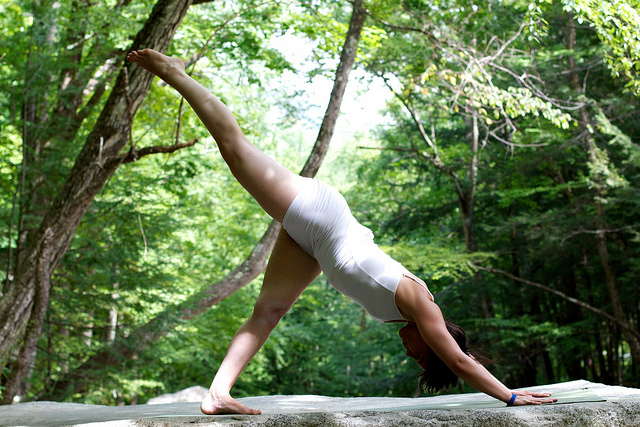Ahhh, the sweet sense of accomplishment.
This article could be another useful read about the right yoga stretches to prevent injuries associated with running, but I’m sure there are plenty of those around.
What I want to cover today is the subtle influence a dedicated yoga practice can have on a different form of physical expression. I sit here a day after completing an amazing 80km Ultra Trail Run Relay and I am so thankful for the strength yoga practice gives me.
The lessons I learn from asana practice as well as the philosophical practice are what make me a strong runner.
I reflect back on my 30+km portion of that run and pull out the moments when yoga saved the day, like when it stopped me from responding to the surge of adrenalin getting dumped into my stomach (which creates physical signs of panic).
That stopped me from being guided by my own impulsiveness and that prevented me from getting swayed too deeply by the minor triumphs and failures occurring within the event.
Running is a meditation in and of itself, especially during longer distances. The running athlete’s mind has to go somewhere beyond the immediate space of physical endurance and challenges in order to stay sane for the long run (pun intended).
The moments where I focused on how much longer I had to go, or reacted to a challenger passing me or even a bear crossing my path, I was slammed in the gut by my own thoughts—becoming quickly overwhelmed, fearful and filled with self doubt.
Fatigue would weigh heavily into each limb like sandbags.
This is the 2nd of Patanjali’s Sutras, and some say the one that sums up the entire practice of yoga: “yoga citta vritti nirodah,” translated as, “yoga is the cessation of the fluctuations of the mind.” The act of shifting my mind to a space of not being swayed, of drawing my mind back to the breath again and again as I ran and repeatedly slowing that breath down to a pace that didn’t have to match my stride.
These are the key components to what makes a mind strong enough to sustain hours alone within the confines of your brain while faced with a continuing physical challenge.
And this is yoga.
If we can take yoga off the mat and learn to see that the causes of suffering (called the Kleshas) are nothing more than mental roadblocks, then we are practicing yoga. Specifically, raga (attachment to pleasure) and dvesha (aversion to discomfort) create passing whims that we then call our perspective—our story.
The mental discipline of yoga is often overlooked in and out of the studio—we should not allow our emotions to rise and fall with everyday highs and lows.
Rather, we should use the tools that yoga offers us: simply be in the breath and discover in that space, a quiet and a bliss.
Notice how when we are in that blissful space, the ebbs and flows that give birth to moods, opinions and judgement release their grip on our spirit and they are no longer our master.
Instead our true spirit rises and is triumphant.
~
~
~
Love elephant and want to go steady?
Sign up for our (curated) daily and weekly newsletters!
Apprentice Editor: Jess Sheppard / Editor: Emily Bartran
Photo: Flickr







Read 0 comments and reply